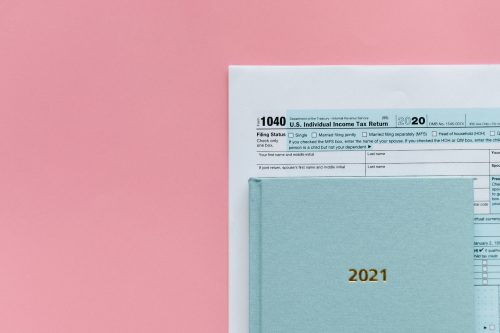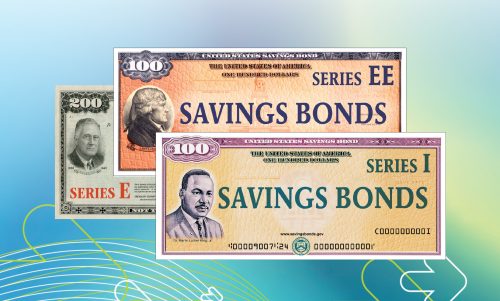- Required minimum distribution (RMD) rules mean you must begin withdrawing from eligible accounts once you reach a certain age.
- Traditional IRAs and other retirement accounts come with RMDs, whereas others (such as Roth IRAs) do not.
- Failure to make an RMD, either partially or in full, can come with steep financial penalties.
Most individual retirement accounts (IRA) are subject to required minimum distributions (RMDs) once the account holder hits a certain age. The IRA minimum distribution process is important to understand because it spells out when you legally need to begin pulling funds from the account, the timing of which may be different than when you might need the money. Some IRAs, such as Roth IRAs, don’t have RMDs.
Mandatory IRA distributions come with specific rules about the minimum amount you’re obligated to withdraw and the timing of withdrawals. It’s important to not only follow these rules every year but also be aware of rule changes, which can be frequent because the penalties for non-compliance can be steep.
What is an IRA required minimum distribution?
An RMD refers to the minimum amount of money an account holder has to withdraw from their account balance by the time they reach a certain age. RMDs apply to traditional IRAs, 401(k)s, 403(b)s and other retirement plans that use pretax dollars for investing.
Once you have turned 72 years old, you have to begin taking withdrawals by April 1, and you will have to continue doing so once every year. These rules are subject to change, however, so it’s important to work with a financial professional to keep on top of evolving requirements.
Which accounts do RMDs apply to?
RMDs apply to certain IRAs, excluding Roth IRAs. Roth IRAs are funded with post-tax income, meaning the Internal Revenue Service (IRS) does not require you to withdraw and pay income tax on your earnings the same way it does with traditional IRAs. Traditional IRAs use pretax contributions, meaning you have to pay taxes when you withdraw funds instead.
RMDs apply to:
- Traditional IRAs
- SEP (Simplified Employee Pension) IRAs
- 401(k) and 403(b) retirement plan accounts
- SIMPLE (Savings Incentive Match Plan for Employees) IRAs
How are IRA minimum distributions calculated?
To calculate your IRA minimum distribution, divide the fair market value of each applicable IRA (as of December 31 of the prior year) by the distribution period/distribution factor published in the IRS RMD table for the year. The IRS provides RMD worksheets to help you understand what you’re required to withdraw every year. RMDs are decided by a life expectancy factor. This means your distribution factor will decrease over time, and your RMD will increase as you age.
RMDs generally increase with age, as the percentage a person must withdraw annually slowly increases as they get closer to their life expectancy, and generally there is some growth in the asset value over time.
For instance, a 75-year-old man with a distribution factor of 22.9 would have to withdraw 4.37%, or $4,370 of his IRA value. The next year his distribution factor falls to 22 with a percentage withdrawal of 4.55%. Starting with $100,000, and no return, his account value is $95,630 at the end of the year. If his RMD grows to 4.55% of his account value in Year 2, then the distribution is $4,351, slightly less than his Year 1 RMD. However, if his account grows just 2% for the year, the ending value of Year 1 is $97,543 and the RMD is $4,438 in Year 2, higher than Year 1.
Distribution factors tend to change yearly. You should carefully research the current numbers on the IRS website to ensure you’re calculating your RMDs correctly. The IRS offers online RMD resources to help you make sense of current rules and requirements.
How are required minimum distributions taxed?
IRA RMDs are taxed as ordinary income the year they’re withdrawn. The top tax rate for RMDs in 2021 and 2022 is 37%.
RMD penalties: What happens if you miss an IRA minimum distribution?
RMDs must be taken by a certain date; otherwise, you will face penalties for missing the deadline. Current legislation requires you to begin making RMDs on April 1st of the year after you turn 72 years old. Missing the RMD cutoff may come with a 50% excise tax on whatever funds you did not distribute on time.
Certain exemptions apply, however. You may qualify for an RMD penalty waiver if, as the IRS states, “the account owner establishes that the shortfall in distributions was due to reasonable error and that reasonable steps are being taken to remedy the shortfall.” In other words, if you made an innocent mistake in the eyes of the IRS, and can prove you’re fixing the issue, you may not be subject to the excise tax.
If you request a waiver, you’re advised to wait until the IRS reaches a decision on your request before paying the excise tax. If the IRS does not honor your waiver request, you can pay what you owe once you receive its decision. Otherwise, if you do not plan to request a waiver, you can pay the excise tax and file the appropriate information on your IRS Form 5329 and Form 2010.
Can RMDs be avoided?
You can delay your RMD, but several caveats should be considered. RMDs can be delayed if you work beyond the minimum age at which they’re required, but this only applies to IRAs established with your current employer. Other IRAs still may be subject to RMDs.
Rolling over a traditional IRA to a Roth IRA can also help you avoid RMDs. Doing so still requires you to pay taxes the year in which you convert the account, but you may end up paying less in tax the earlier you do so as taxes tend to rise. Rolling over your account early into the retirement saving process can save you on taxes in the long run.
Avoid RMD mistakes with help from a financial professional
Understanding the right amount of money to withdraw for your RMD can be complicated, and failure to distribute the right amount can come with steep penalties. The best way to ensure that you’re handling your RMDs properly is to work with a financial advisor or tax professional. These people keep up with tax code changes that may affect how much you’re required to withdraw every year. They can also help you avoid making costly mistakes or help remedy existing issues depending on your individual situation.
Working with financial and tax professionals can help you not only avoid mistakes with RMDs but also ensure that you’re managing your money as wisely as possible across the board. Carefully managing your money can make all the difference up to and during retirement, a time when you need to make sure your savings will last.
The strategies mentioned in this article may have tax and legal consequences; therefore, you should consult your own attorneys and/or tax advisors to understand the tax and legal consequences of any strategies mentioned in this document.










